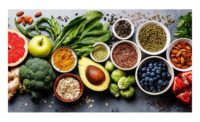Olam predicts major issues beyond 2020 for smallholders
Farmer productivity will be hampered by lack of access to finance, women's equality and climate change impacts.

In recent years, the confectionery industry has poured in millions of dollars to create a sustainable cocoa supply chain by investing in smallholders and cocoa-producing communities — but Olam predicts it's not enough.
The Olam Livelihood Charter (OLC), launched in 2010, has been working for five years to provide smallholders with agri-training and quality seeds, while also working to help overcome wider economic, environmental and social challenges. OLC has made much progress in these five years, supporting close to 345,000 smallholders—up from roughly 64,000 at its launch.
But in spite of these advances, Olam predicts that smallholder productivity across Africa, Asia, and South America will still be massively hindered by a lack of access to finance, equality for women and climate change impacts. Unless far greater collaboration and knowledge sharing across agri-supply chains become a reality, a truly sustainable industry remains a pipe dream.
“Smallholders grow globally consumed crops such as cocoa, coffee and cashew and if they don’t see farming as a viable livelihood then they will seek other work, typically in the cities," says Chris Brett, Olam’s global head of corporate responsibility and sustainability.
Although OLC has made improvements, there is much to be done.
“Let’s take access to finance," says Brett. "Although innovation in mobile payments and banking services has improved, limited rural banking infrastructure and lack of credit history is still severely restricting farmers and their ability to buy agri-inputs like fertilizer, hire labor or invest."
Even when lenders are present, prospects are not high. Banks are risk-averse and informal lenders charge high interest rates, making it difficult for smallholders to secure loans.
"By 2020 our aim is to embrace about 500,000 smallholders across 1 million hectares under the OLC, but there are millions more who need support," says Brett. "We have therefore identified another five key learnings to share with others in the field who may be facing similar challenges."
1. Navigate local customs sensitively to empower women
Evidence shows that women in smallholder communities will invest 90 cents of every $1 earned in her family and community, compared to 35 cents for men. Some traditions, however, prevent women from owning farms, speaking in meetings, or attending training. Encouraging chiefs to permit women's participation can be a slow process. In 2015, OLC saw a six percent increase in female farmers to reach 67,708.
2. Equip smallholders to deal with climate change now
As the reality of climate change spreads to farming communities, so does the urgency of mitigating the impacts. Training farmers in climate-smart agriculture is essential to building resilient rural livelihoods and is on the agenda across OLC projects in at-risk zones. In 2015, OLC training in this area reached 60,000 farmers managing 110,000 hectares of cocoa, coffee, cotton, cashew, sugar, and black pepper crops.
3. Train beyond the classroom with financial reassurance
Training has led to increased yields, but behavior back on the farms takes time to change. Farmers have to put their faith in advice that may be contrary to generations of tradition, or they may be unwilling to take what appears to be a financial risk.
Pruning, for example, will help trees flourish in the future but a cocoa farmer may choose not to risk losing branches that may have yielded even a small number of pods in the past. Hence the importance of long-term financing while the tree rejuvenates, as well as establishing more model farms and demo plots.
4. Focus not just on cash crops
Farmers need to grow a balanced diet. Most agri-training focuses on increasing the productivity of income-earners rather than stomach-fillers, but food security is vital for farmer wellbeing. In 2015, OLC delivered training on improved nutrition to 4,000 farmers in Côte d’Ivoire and provided $2 million worth of agri-inputs like fertilizer for staple food crops. The approach saw farmers more than double their yield as a result of new varieties of maize that were distributed.
5. Use technology as a game changer
Technological advances can benefit both farmers and consumers in yet-unforeseen ways. The Olam Farmer Information System records and analyzes information on agricultural practices, production inputs, finances, yields, and GPS data. The application of GPS mapping, big data, and online systems have had significant impact on traceability and the possibility of tailoring agri-advice down to individual farm management plans.
Looking for a reprint of this article?
From high-res PDFs to custom plaques, order your copy today!









